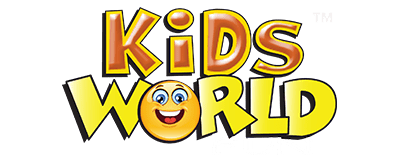Why Middle School is the Perfect Time to Explore Healthcare Careers
Here’s something most people miss: middle school isn’t just about awkward growth spurts and locker combinations. It’s actually a golden opportunity for career discovery that too many families sleep on. Listen, the healthcare sector is facing a serious staffing crisis, the Bureau of Labor Statistics is forecasting roughly 203,300 open RN positions through 2031 as professionals retire and demand grows.
That’s a massive gap, but also an enormous opportunity for your kid. Healthcare careers for middle schoolers might sound like something far off on the horizon, but they’re actually within reach right now through simple exploration during these crucial developmental years.
The Brain Science Behind Middle School Career Exploration
Your middle schooler isn’t a little kid anymore, not by a long shot. They’re sitting right in this incredible developmental sweet spot that makes career exploration exceptionally powerful. Their brains? They’re building abstract thinking abilities that let them draw connections between what they do today and what happens tomorrow.
How Cognitive Growth Supports Healthcare Learning
Between ages 11 and 14, something fascinating happens in your child’s brain. They start grasping complicated cause-and-effect chains. Medical concepts that seemed impossible a year ago suddenly click. They get how cigarette smoke tears up lung tissue or why vaccines train the immune system. These aren’t just random facts; they’re memorizing, they actually understand the mechanisms.
Problem-solving capabilities explode during these middle school years. Your student can now work backward from symptoms to figure out what’s wrong and what might fix it. This cognitive jump makes healthcare exploration way more meaningful than it would’ve been when they were in elementary school.
Building Identity Through Career Possibilities
Erik Erikson’s identity research shows us that adolescence is when kids really start figuring themselves out. Middle school is the perfect time to explore healthcare careers because it allows students to discover their interests and passions early on. During this stage, young students are curious and eager to learn about different professions, and participate in activities.
With a medical camp for middle schoolers can ignite their enthusiasm for the medical field. This exposure helps them understand the importance of healthcare and develop essential skills, inspiring them to consider a career dedicated to helping others.
Early exploration can boost confidence and motivation, making middle school an ideal period to introduce the possibilities within healthcare professions. There’s something beautiful about exploring without pressure. They can be curious. They can pivot. They can change their minds ten times, and that’s perfectly fine.
The Curiosity Advantage
Research tells us curiosity hits peak levels during early adolescence. Middle schoolers are naturally hungry to understand how bodies work, why diseases develop, and what healthcare professionals actually spend their days doing. This built-in inquisitiveness makes them sponges for healthcare exploration.
Plus, they haven’t absorbed all the limiting stereotypes yet. A seventh-grader hasn’t internalized messages about who’s “supposed” to become a doctor. They’re genuinely open to diverse healthcare paths and can picture themselves in careers they’ve never even heard of before.
Recognizing why middle school is the optimal window starts with understanding the unique brain changes happening during these pivotal years.
Academic Benefits That Extend Beyond Career Planning
These developmental advantages don’t just stay theoretical, they translate into real, measurable academic gains that ripple far beyond career exploration. Students who connect classroom learning to actual careers often show dramatic jumps in both motivation and performance.
STEM Grades Get a Boost
Biology transforms when it’s about helping real patients instead of memorizing cell diagrams. Research confirms that students in career-focused programs show improved performance in math and science. Homework stops feeling pointless when they see the connection to their potential future.
A recent Mercer report projects serious healthcare workforce shortages across America by 2028, with New York, New Jersey, Tennessee, Massachusetts, and Georgia getting hit hardest. When students understand that these career opportunities exist, they push harder through challenging coursework.
Chemistry matters differently when you’re exploring medication interactions. Anatomy becomes captivating when you understand how physicians apply that knowledge every single day. Context turns abstract subjects into personally relevant information.
Preparing for Advanced Coursework
Early healthcare exposure builds confidence before AP Biology, Chemistry, and Physics hit in high school. Students who explore healthcare careers in middle school show up to these demanding classes already equipped with foundational knowledge and genuine enthusiasm.
They’re familiar with medical terminology before their classmates crack open the textbook. They’ve witnessed scientific concepts applied in clinical settings. This foundation gives them a legitimate head start when the academic pressure intensifies.
Soft Skills Development Starts Early
Healthcare exploration develops communication abilities that benefit students across every subject area. Learning to explain medical ideas clearly, collaborate during team simulations, and manage time effectively, all of this contributes to overall academic success.
Empathy skills accelerate through patient care scenarios. Students build emotional intelligence that makes them better classmates, better friends, and eventually, better professionals.
With these academic advantages clear, let’s dive into specific hands-on activities that make healthcare career exploration both engaging and educational for middle schoolers.
Hands-On Ways to Explore Healthcare Careers
Now that you understand why exploration matters, let’s talk about practical activities that bring healthcare careers to life. Middle schoolers don’t learn from lectures, they learn by doing.
Real-World Learning Opportunities
Job shadowing at nearby hospitals lets your student observe healthcare pros in their natural habitat. Plenty of facilities run structured programs built specifically for younger students. Can’t arrange in-person experiences? Virtual reality medical simulations fill that gap beautifully.
Summer health science programs blend education with experiential activities. Students construct anatomy models, practice first aid skills, and earn CPR certifications. These experiences pad resumes while genuinely sparking interest.
Volunteer positions at healthcare facilities might involve supporting patient advocates or helping out in wellness clinics. These roles teach accountability while providing invaluable exposure to healthcare environments.
Interactive Projects That Engage
Science fair projects centered on health topics let students investigate community health questions. Medical technology coding projects appeal to tech-oriented kids interested in healthcare innovation. Biomedical engineering experiments merge creativity with scientific thinking.
Healthcare innovation competitions push students to solve actual medical challenges. These contests frequently offer scholarships and recognition that strengthen college applications down the road.
Digital Resources for Career Discovery
Interactive career assessment platforms help students match their interests and strengths to specific healthcare roles. Virtual hospital tours reveal the day-to-day reality of different positions. Online mentorship initiatives connect students with practicing healthcare professionals who field questions and share real experiences.
Healthcare career apps and games make exploration accessible and fun from the couch. Medical podcasts aimed at teens break down complex topics in relatable language. Exposure to this broad career landscape in middle school creates a compound effect of benefits that multiply throughout high school, college, and beyond.
The Healthcare Career Spectrum Goes Way Beyond Doctors
The healthcare sector contains hundreds of distinct career paths, but most middle schoolers only know about doctors and nurses. This narrow awareness stops them from discovering roles that might perfectly match their unique talents and interests.
Clinical Careers Offer Variety
Physicians can focus on over 50 different specialties, everything from pediatrics to sports medicine to pathology. Nursing encompasses roles like nurse practitioners, nurse anesthetists, and nurse midwives. Physician assistants diagnose conditions and write prescriptions with substantial independence.
Dental careers stretch beyond general dentistry into orthodontics, oral surgery, and dental hygiene. Emergency medical services provide high-intensity careers for people who excel under pressure. Surgical technologists work directly in operating theaters, supporting intricate procedures.
Allied Health and Therapy Professions
Physical therapists support patients recovering mobility after injuries. Occupational therapists help people rebuild daily living capabilities. Speech therapists address communication challenges across all age ranges.
Respiratory therapists operate breathing equipment for patients with pulmonary conditions. Medical imaging careers span radiologic technologists, ultrasound technicians, and MRI specialists. Laboratory scientists examine blood, tissue, and other specimens to identify diseases.
Technology Meets Healthcare
Biomedical engineers create medical devices and prosthetic limbs. Health informatics professionals manage healthcare data infrastructure. Telemedicine technology specialists build platforms enabling remote care.
Medical coding experts convert diagnoses into standardized billing codes. Artificial intelligence developers design algorithms supporting diagnostic processes. Pharmaceutical researchers hunt for new medications to combat diseases.
How Parents and Educators Can Support Exploration
Middle school career guidance succeeds when adults find the sweet spot between encouragement and pressure. Students need freedom to explore while having access to resources and opportunities.
Creating the Right Environment
Celebrate their curiosity instead of demanding commitments. Middle schoolers should feel completely free to investigate multiple healthcare paths without picking a final destination. Normalize that interests shift, that’s literally the purpose of exploration.
Offer access to books, websites, and programs without forcing specific careers. Let students drive their own exploration while you facilitate connections and open doors. This strategy builds internal motivation that outlasts external pressure for years.
Connecting With Healthcare Mentors
Mentorship relationships can reshape a student’s entire trajectory. Seek out professionals in your family circle, neighborhood, or through structured programs. Virtual mentorship actually works remarkably well for middle schoolers comfortable with video communication.
Frame these relationships with transparent expectations about time investment and contact frequency. Even sporadic conversations with working healthcare professionals deliver insights that career fairs simply can’t match.
Documenting the Journey
Push your student to maintain a portfolio tracking their exploration experiences. This could include journal reflections about shadowing days, photos from camps, certificates from training, and thoughts on what they discovered.
This documentation serves multiple functions, it helps students digest their experiences, monitor skill growth, and ultimately provides material for college applications and scholarship essays.
Questions Parents Ask About Healthcare Career Exploration
1. What if my child’s interests change after exploring healthcare?
That’s completely normal and actually proves the exploration process is working. The capabilities gained, critical thinking, empathy, scientific literacy, transfer to any career direction. Understanding what doesn’t fit you is equally valuable as discovering what excites you.
2. Are middle schoolers too young to volunteer at healthcare facilities?
Most hospitals set minimum volunteer ages at 14, but creative alternatives definitely exist. Students can volunteer with health-focused nonprofits, help at community health fairs, or join structured programs designed specifically for their age bracket. Virtual volunteering has dramatically expanded the available options.
3. How much time should middle schoolers spend on career exploration?
Quality trumps quantity every time. One meaningful shadowing experience or summer program frequently delivers more value than scattered activities. Target consistent exposure rather than overwhelming schedules. A few hours monthly exploring healthcare alongside regular academics strikes a sustainable balance.
Final Thoughts on Early Healthcare Career Planning
Middle school offers this unique window where students possess the mental capabilities to grasp healthcare concepts without the weight of immediate career decisions crushing them. Beginning exploration during these years allows students to accumulate knowledge gradually, develop relevant capabilities naturally, and make informed choices when the stakes climb in high school. Healthcare desperately needs passionate, well-trained professionals, and that training begins way earlier than most families realize. Whether your middle schooler ultimately becomes a surgeon, health data analyst, or discovers healthcare isn’t their calling, the exploration journey itself builds essential life capabilities that serve them wherever they end up landing.


